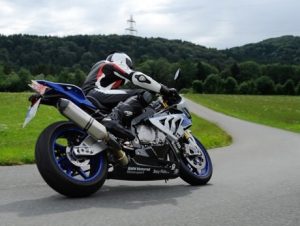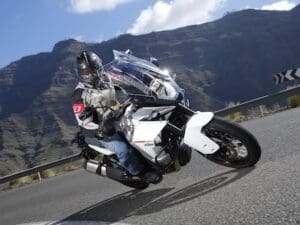Have motorcycles become too hi-tech in their quest to become safer?

While I applaud the addition of ABS and traction control, I’m also wary that these devices allow us to ride faster so that when we do crash, we do so at much higher speeds than before.
The latest advance in hi-tech primary safety devices is BMW’s cornering ABS which will allow riders to go faster in corners and be more abrupt on the brakes without losing control. It is different from Bosch’s Motorcycle Stability System (MSC) which prevents side slipping when leaned over in corners, prevents the bike standing up abruptly if you hit the brakes during cornering, prevents rolling over in emergency stops, minimises wheelies and spin-outs under heavy acceleration and stops wheels from locking. In other words, they will forgive bad riding techniques.
Ok, we need a safety net, but maybe we have now gone a bit far.

When I was young, I rode and drove vehicles with crap tyres, crap suspension and crap brakes. I quickly learnt the limits of adhesion because I kept going past them. That was when I learnt what to do to avoid loss of adhesion becoming a crash. And I learnt it at relatively low speeds.
Todays’ young motorists don’t know what it feels like to lose control because tyres, suspension, brakes and all the hi-tech primary safety devices prevent them from losing control too easily. So they go faster into corners, braking later and don’t understand, experience or appreciate the limits of adhesion. When they do go past those limits, it is at a lot higher speed than when I made the same errors.
That’s all well and good in a car because modern cars have an awful lot of hi-tech secondary safety devices such as airbags and crumple zones, but when it comes to secondary safety, motorcycles have not advanced much at all. Ok, the Honda GoldWing has an airbag and you can get much better rider gear these days, some of which also has an airbag. But is it nothing like the safety cell of a car.
So now we have bikes that have far greater primary safety which prevents accidents, but when we do crash, we do so at much higher speeds without any great improvement in crash protection.
And what happens when the technology fails? What skills will the rider have to fall back on?
Have we simply gone too far with hi-tech safety? Would riders be better served spending the extra dollars on good old-fashioned training rather than expensive modern hi-tech?
- If it’s training you think you need, check out this video.


